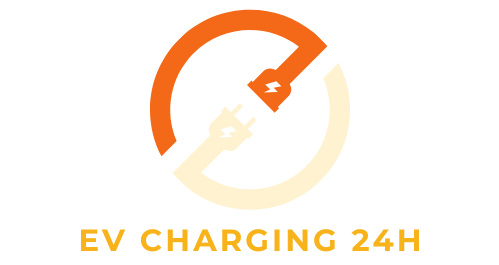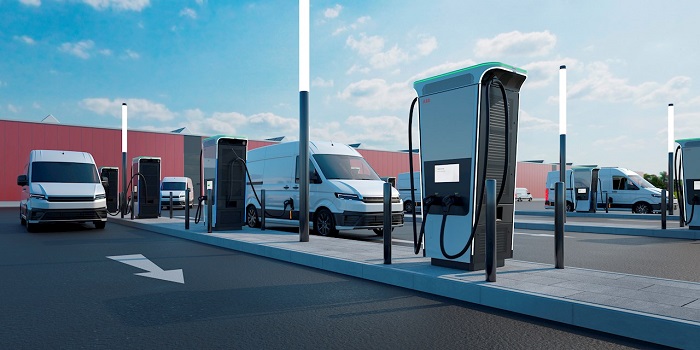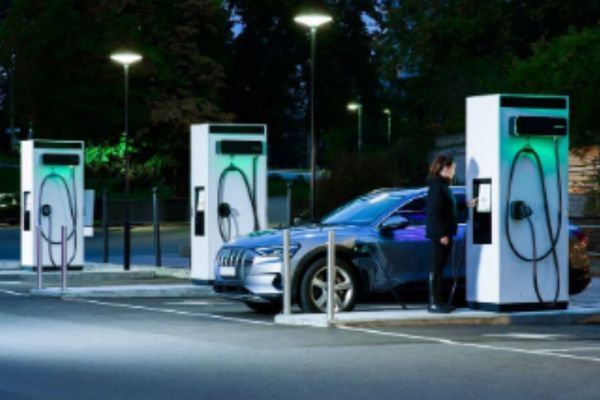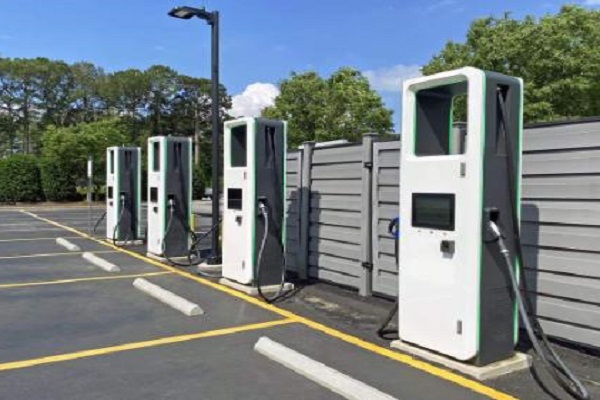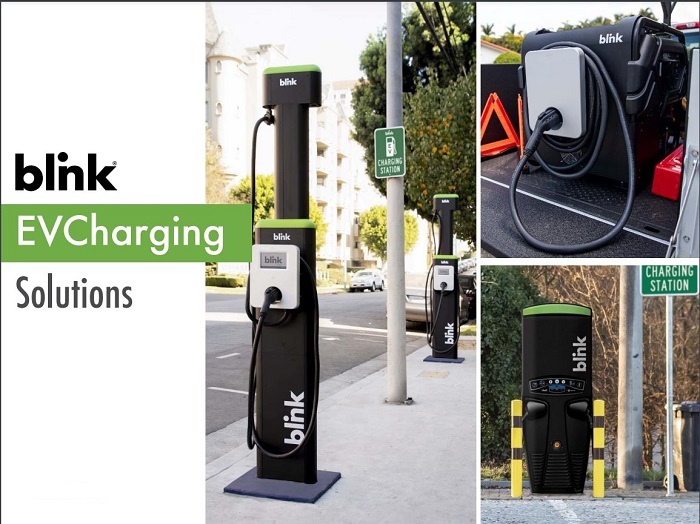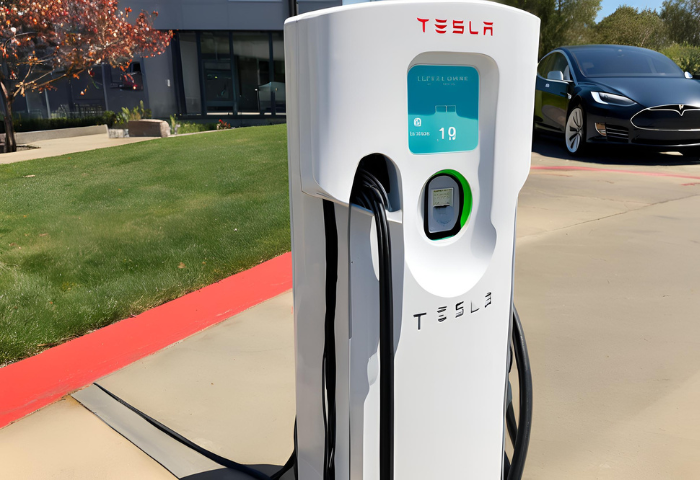Buying a Level 3 EV Charger: What You Need to Know
Level 3 EV chargers, the DC fast chargers of the electric vehicle world, offer the ultimate in charging speed. However, unlike Level 1 and Level 2 chargers, which are more suited for home use, Level 3 chargers are typically purchased for commercial or public charging station applications. This guide will equip you with the essential knowledge you need before you invest in a Level 3 charger.
Types of Level 3 EV Chargers
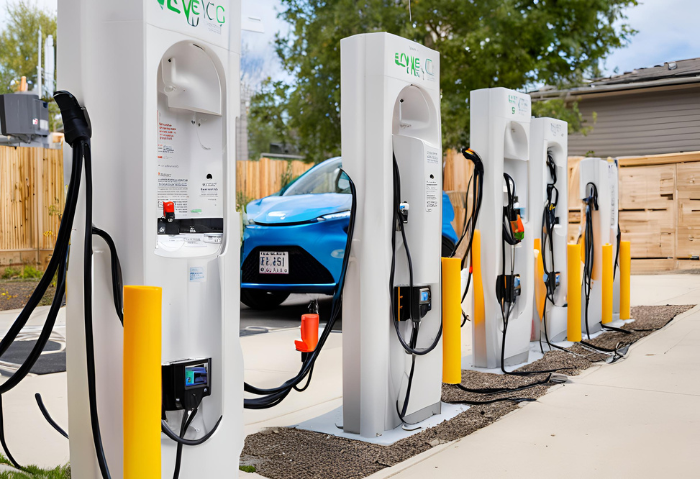
Level 3 electric vehicle (EV) chargers, also known as DC fast chargers, are designed to provide high-power charging, allowing EVs to recharge quickly. Here are the types you mentioned:
CHAdeMO Chargers: Japanese automakers like Nissan and Mitsubishi frequently use this type of charger. It uses the CHAdeMO protocol for communication between the charger and the vehicle. These chargers typically deliver high power and are capable of charging compatible vehicles rapidly.
CCS Chargers (Combined Charging System): Several automakers, including European and American manufacturers, have adopted CCS chargers as a universal standard. They integrate both AC and DC charging capabilities into one connector. CCS is seen as a more versatile solution as it supports both AC and DC charging, making it compatible with a wider range of vehicles.
Tesla Superchargers: Tesla operates its own network of high-speed charging stations known as Superchargers. These chargers make use of a proprietary connector that Tesla developed specifically for Tesla vehicles. They provide very high charging speeds, allowing Tesla vehicles to recharge quickly and efficiently.
Factors to Consider Before Buying
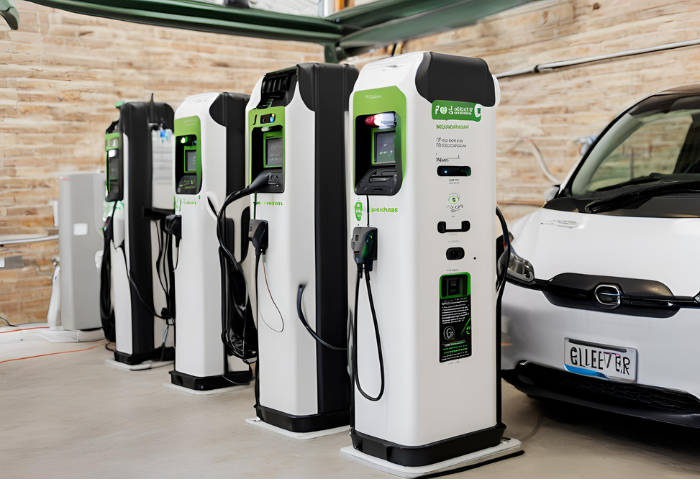
Before purchasing an electric vehicle (EV) charger, there are several factors to consider to ensure it meets your needs:
Charging Speed: Consider the charging speed of the charger and how it aligns with your driving habits. Level 3 chargers (DC fast chargers) offer rapid charging compared to Level 2 chargers. Assess how quickly you need your EV to charge and choose a charger with an appropriate charging speed.
Compatibility with Your EV: Ensure that the charger is compatible with your specific EV model. Different EV manufacturers may use different charging connectors and protocols. Verify that the charger supports the charging standards required by your vehicle, such as CHAdeMO, CCS, or Tesla’s proprietary connector.
Network Availability: If you plan to travel extensively or rely on public charging infrastructure, consider the availability of charging networks compatible with your charger. Research the locations of charging stations along your regular routes and ensure they support the charger you intend to purchase. Consider factors like the density of charging stations, reliability, and accessibility.
Portability: Depending on your lifestyle and needs, you may prioritize portability. Portable chargers allow you to charge your EV at different locations, including your home, workplace, or while traveling. Consider the size, weight, and ease of transport of the charger if portability is important to you.
Comparison of Top Level 3 EV Chargers
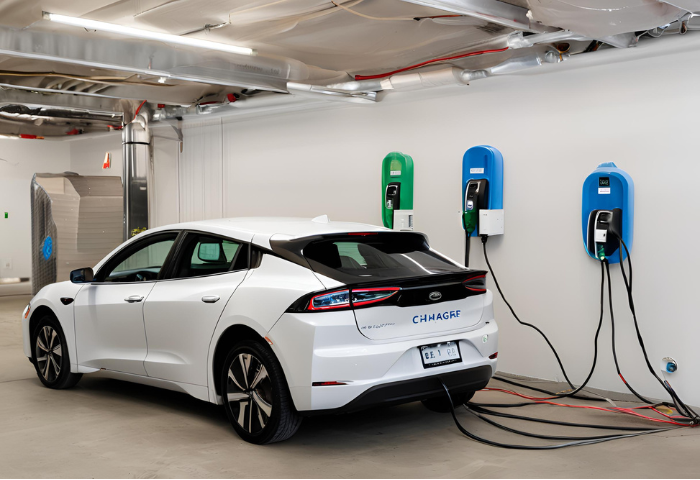
Here’s a comparison table of the top Level 3 EV chargers: ChargePoint Express Plus, EVgo Ultra Fast Chargers, and ABB Terra HP.
| Feature | ChargePoint Express Plus | EVgo Ultra Fast Chargers | ABB Terra HP |
| Charging Speed | Up to 400 kW (depending on configuration) | Up to 350 kW | Up to 350 kW (depending on configuration) |
| Compatibility | CCS, CHAdeMO | CCS, CHAdeMO, and Tesla (with adapters) | CCS, CHAdeMO |
| Network Availability | Extensive global network coverage | Large network in the United States | Global deployment |
| Additional Features: | ChargePoint app integration for location, payment, and monitoring | Dynamic power sharing and energy storage intCHAdeMO, and | Robust design, optional features like energy storage |
| Initial Purchase Price | Varies | Varies | Varies |
| Installation Costs | Varies | Varies | Varies |
| Maintenance Expenses | Varies | Varies | Varies |
Please note that the costs and specific features may vary based on factors such as configuration, location, and other considerations.
Costs Associated with Level 3 EV Chargers
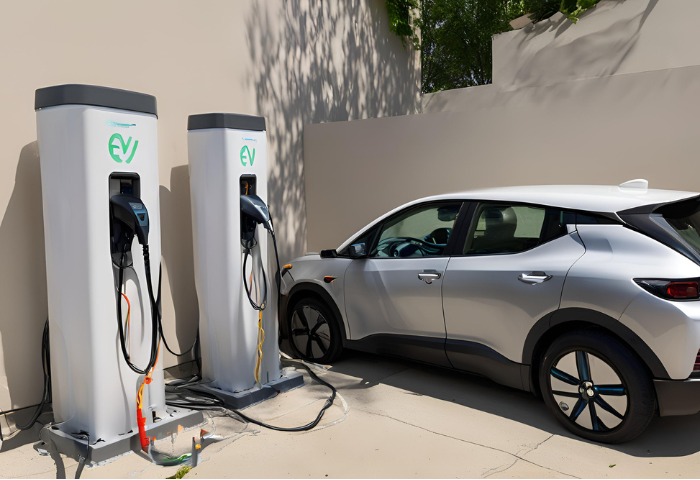
The costs associated with Level 3 EV chargers can vary based on factors such as the manufacturer, model, installation requirements, and ongoing maintenance needs. Here’s a breakdown of the typical costs:
Initial purchase price:
Level 3 EV chargers are more expensive than Level 2 chargers due to their higher power output and advanced technology. The initial purchase price of a Level 3 charger can range from tens of thousands to over a hundred thousand dollars, depending on factors such as charging speed, features, and manufacturer.
Installation Costs:
Installing a Level 3 EV charger requires specialized electrical infrastructure and may involve significant installation costs. Factors that can influence installation costs include site preparation, electrical upgrades, permits, labor costs, and any additional equipment needed for installation. Installation costs can vary widely depending on factors such as the location, existing infrastructure, and complexity of the installation. On average, installation costs for Level 3 chargers can range from several thousand to tens of thousands of dollars.
Maintenance Expenses:
While Level 3 chargers typically require less maintenance compared to internal combustion engine vehicles, there are still maintenance expenses to consider. Maintenance tasks may include regular inspections, software updates, cleaning, and occasional repairs. Maintenance costs can vary depending on factors such as the charger’s age, usage, warranty coverage, and any service contracts or agreements with the manufacturer or service provider. Over time, maintenance expenses for Level 3 EV chargers are generally lower compared to traditional fueling infrastructure due to fewer moving parts and simpler maintenance requirements.
Best Places to Purchase Level 3 EV Chargers
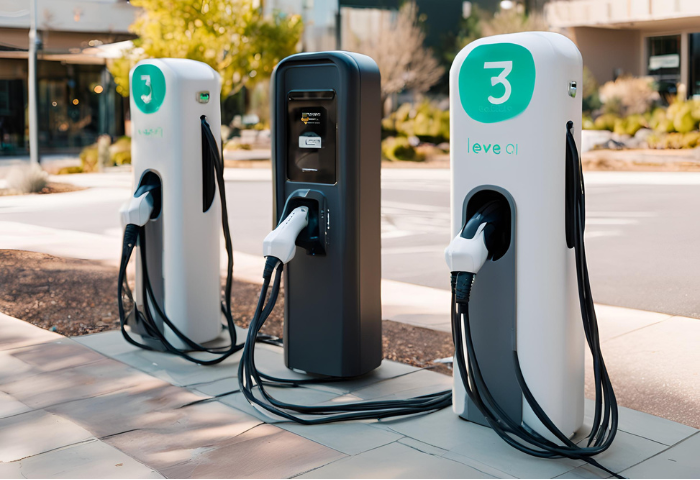
The best place to purchase Level 3 EV chargers depends on factors such as your preferences, convenience, and specific needs. Here are some options:
Directly from Manufacturers: Buying directly from manufacturers can offer advantages such as access to the latest models, direct support from the manufacturer, and potential customization options. Many leading EV charger manufacturers, such as ChargePoint, EVgo, and ABB, offer their products for sale through their official websites or authorized dealerships.
Specialty EV Charging Stores: Some specialty stores focus exclusively on EV charging equipment and accessories. These stores may offer a curated selection of Level 3 chargers from various manufacturers, along with expert advice and support. Visiting a specialty EV charging store can be beneficial if you prefer hands-on assistance and personalized recommendations.
Online Retailers: Online retailers like Amazon, Home Depot, and EV-specific online stores offer a wide range of Level 3 EV chargers for purchase. Shopping online provides convenience, extensive product selection, and the ability to compare prices and read customer reviews. However, be sure to verify the seller’s reputation and check for warranty and return policies before making a purchase.
Installation Process for Level 3 EV Chargers

The installation process for Level 3 EV chargers typically involves professional services, adherence to safety regulations, and obtaining necessary permits. Here’s an overview of each aspect:
Professional Installation Services:
Level 3 EV chargers require specialized electrical expertise for installation due to their high power requirements. It’s recommended to hire licensed electricians or experienced professionals who are familiar with EV charging infrastructure.
The installation process may include site assessment, electrical system evaluation, equipment selection, wiring installation, and testing to ensure proper functionality.
Professional installers can also provide guidance on optimal charger placement, cable routing, and safety considerations.
Safety Regulations:
Safety is paramount when installing Level 3 EV chargers to prevent electrical hazards and ensure compliance with regulations.
Installers must follow applicable electrical codes and standards, such as the National Electrical Code (NEC) in the United States or local regulations in other regions.
Safety measures may include proper grounding, overcurrent protection, circuit sizing, and insulation to prevent electrical faults and ensure user safety.
Permitting Requirements:
Installing a Level 3 EV charger typically requires obtaining permits from local authorities or building departments.
Permitting requirements vary depending on the location, jurisdiction, and specific regulations governing electrical installations.
The permitting process may involve submitting installation plans, electrical diagrams, equipment specifications, and other documentation for review and approval.
Permitting ensures that installations meet safety standards, zoning requirements, and environmental regulations.
Benefits of Owning a Level 3 EV Charger
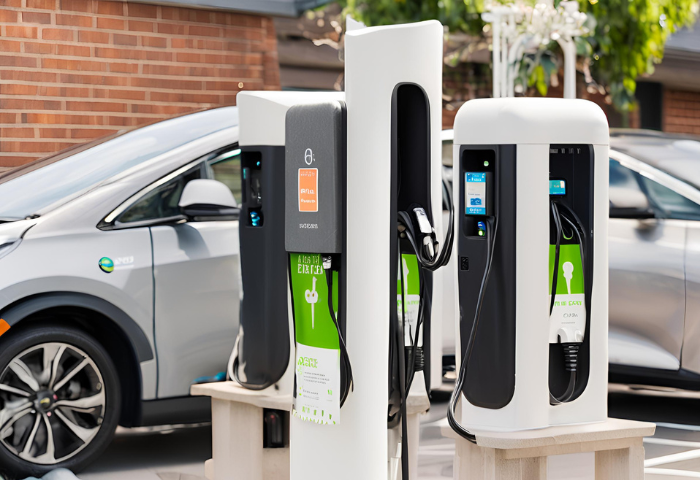
Owning a Level 3 EV charger offers several benefits, including:
Rapid Charging Speeds: Level 3 EV chargers provide significantly faster charging speeds compared to Level 1 and Level 2 chargers. They can recharge an electric vehicle’s battery to a significant percentage in a relatively short amount of time, making them ideal for quick top-ups during busy days or on longer trips.
Convenience for Road Trips: Level 3 chargers are essential for long-distance travel because of their rapid charging capabilities. With access to Level 3 chargers along highways and major routes, EV owners can confidently embark on road trips, knowing that they can recharge quickly and continue their journey without significant delays.
Enhanced Driving Range: Rapid charging with Level 3 chargers can effectively extend an electric vehicle’s driving range. By reducing the time required for recharging, Level 3 chargers enable EV owners to cover longer distances without worrying about running out of battery charge. This extended range enhances the practicality and versatility of electric vehicles for various driving scenarios.
Environmental Impact: Level 3 EV chargers contribute to reducing greenhouse gas emissions and promoting sustainability by facilitating the adoption of electric vehicles. As more EV owners rely on Level 3 chargers for rapid charging, it helps accelerate the transition away from fossil fuel-powered vehicles, leading to reduced air pollution and dependence on non-renewable energy sources.
Maintenance Tips for Level 3 EV Chargers
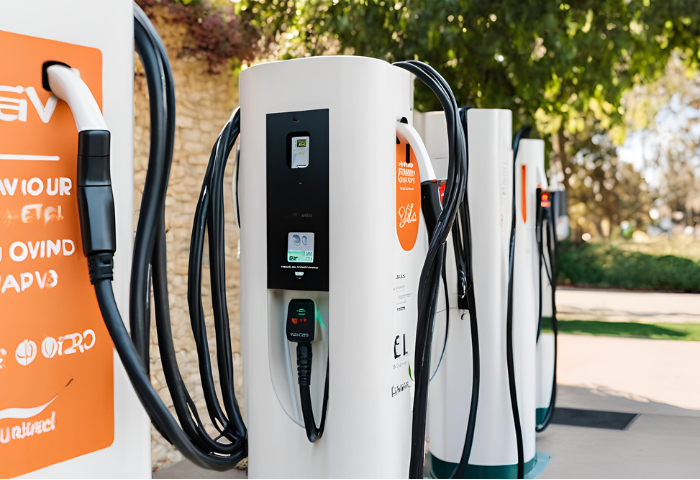
Maintaining a Level 3 EV charger ensures its optimal performance and reliability. Here are some maintenance tips:
Regular cleaning and inspection:
Keep the charging station clean by wiping it down regularly to remove dust, dirt, and debris.
Inspect the charger’s exterior, connectors, and cables for signs of wear, damage, or corrosion.
Check for any loose or damaged components and tighten connections as needed.
Ensure that the surrounding area is free from obstructions that could interfere with charging operations.
Software Updates:
Stay up-to-date with the firmware and software updates provided by the charger manufacturer.
Regularly check for updates and install them promptly to ensure that the charger operates with the latest features, security patches, and performance improvements.
Follow the manufacturer’s instructions for updating the charger’s software, which may involve connecting to a network or using a USB drive.
Troubleshooting Common Issues:
Familiarize yourself with common issues that may arise with Level 3 EV chargers, such as communication errors, charging failures, or connector issues.
Refer to the charger’s user manual or troubleshooting guide for guidance on identifying and resolving common issues.
Contact the manufacturer or a qualified technician for assistance if you encounter persistent problems that you cannot resolve on your own.
Scheduled Maintenance:
Follow the manufacturer’s recommended maintenance schedule for the Level 3 charger.
Schedule periodic inspections and preventive maintenance tasks to ensure that the charger continues to operate reliably.
Consider enrolling in a maintenance plan or service contract offered by the manufacturer or a certified service provider for regular maintenance and support.
State & Federal Incentives for Purchasing Level 3 EV Chargers

State and federal incentives for purchasing Level 3 EV chargers can vary depending on location and government policies. Here are some common types of incentives available:
Tax Credits:
Some jurisdictions offer tax credits for the purchase and installation of EV charging equipment, including Level 3 chargers. These tax credits can offset a portion of the costs associated with acquiring and installing the charger. The availability and amount of tax credits vary by region and may be subject to certain eligibility criteria.
Rebates:
Many states, utilities, and local governments offer rebates or incentives to encourage the deployment of EV charging infrastructure. These rebates may provide financial incentives for businesses, property owners, or municipalities to install Level 3 chargers. Rebate programs typically require applicants to meet specific requirements, such as installing chargers in designated locations or meeting certain charging standards.
Grants:
Governments at the federal, state, and local levels may offer grants or funding opportunities to support the installation of EV charging infrastructure, including Level 3 chargers. These grants can help offset the upfront costs associated with purchasing and installing chargers and may be available to various entities, such as businesses, nonprofits, or government agencies. Grant programs often prioritize projects that expand access to charging infrastructure in underserved communities or support broader clean energy goals.
Sustainability of Level 3 EV Chargers

The sustainability of Level 3 EV chargers encompasses various aspects, including energy efficiency, future technological advancements, and integration with renewable energy sources:
Energy Efficiency:
Level 3 EV chargers are designed to provide rapid charging, which can be beneficial in reducing charging times and promoting the adoption of electric vehicles. However, it’s essential to consider the energy efficiency of these chargers to minimize their environmental impact. Manufacturers are continuously improving the efficiency of Level 3 chargers to reduce energy consumption during charging operations. Energy-efficient chargers can help optimize the use of electricity and minimize waste, contributing to overall sustainability.
Future Technological Advancements:
Continued advancements in technology play a crucial role in enhancing the sustainability of Level 3 EV chargers. Manufacturers are investing in research and development to improve charger efficiency, reliability, and performance. This includes innovations such as smart charging algorithms, energy management systems, and bidirectional charging capabilities. These advancements enable more efficient use of electricity, reduce demand on the grid, and support the integration of renewable energy sources.
Integration with Renewable Energy Sources:
Integrating Level 3 EV chargers with renewable energy sources further enhances their sustainability. By harnessing solar, wind, or other renewable energy sources to power charging infrastructure, it’s possible to reduce greenhouse gas emissions and reliance on fossil fuels. This integration can be achieved through onsite renewable energy generation, such as solar panels installed alongside charging stations, or by sourcing renewable electricity from utilities or renewable energy providers. Additionally, smart charging technologies can optimize charging schedules to align with periods of high renewable energy availability, maximizing the use of clean energy resources.
By understanding the costs, planning considerations, and future trends, you can make an informed decision about buying a Level 3 EV charger. Level 3 chargers offer significant benefits, but careful planning and a cost-benefit analysis are crucial before this substantial investment.

Henry Michael is a leading expert in EV charging station research, specializing in innovative solutions for electric vehicle infrastructure. With a passion for sustainability and technological advancement, he is dedicated to advancing the accessibility and efficiency of EV charging worldwide.
